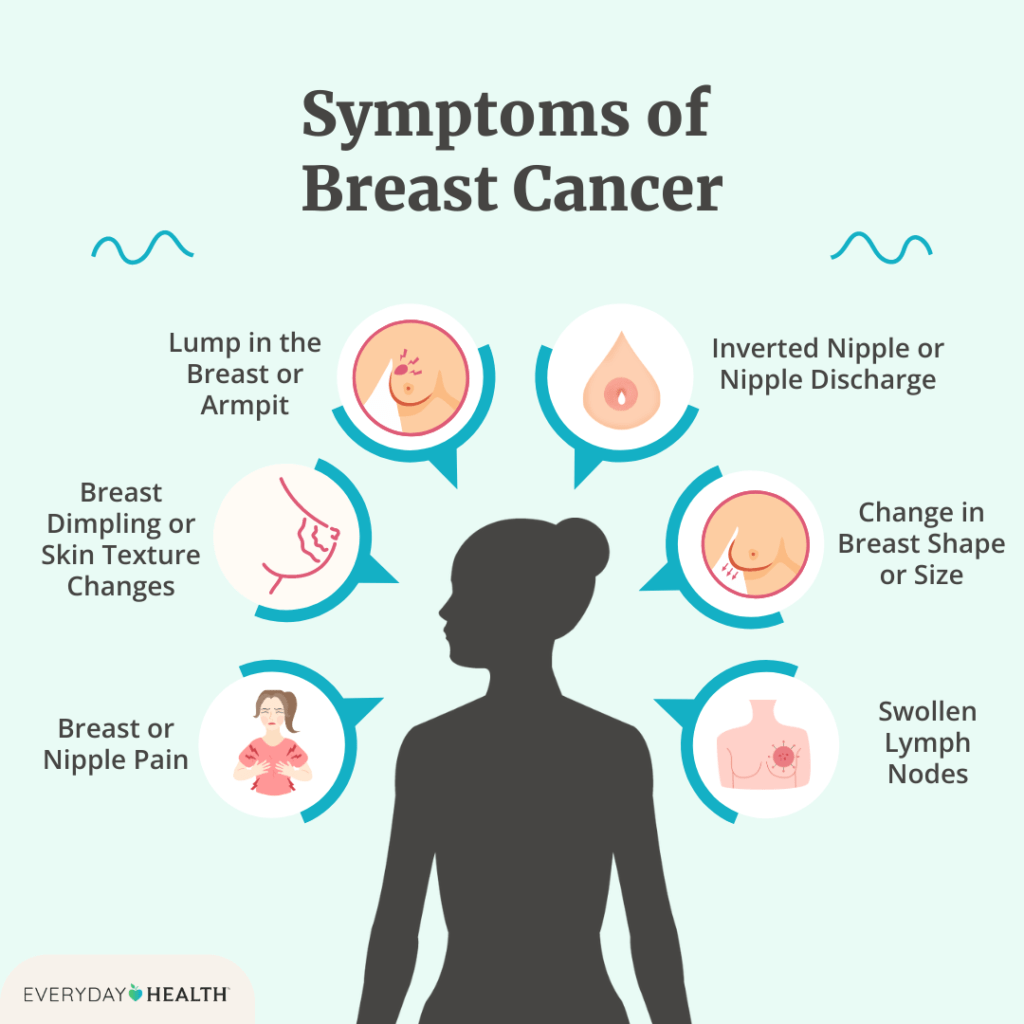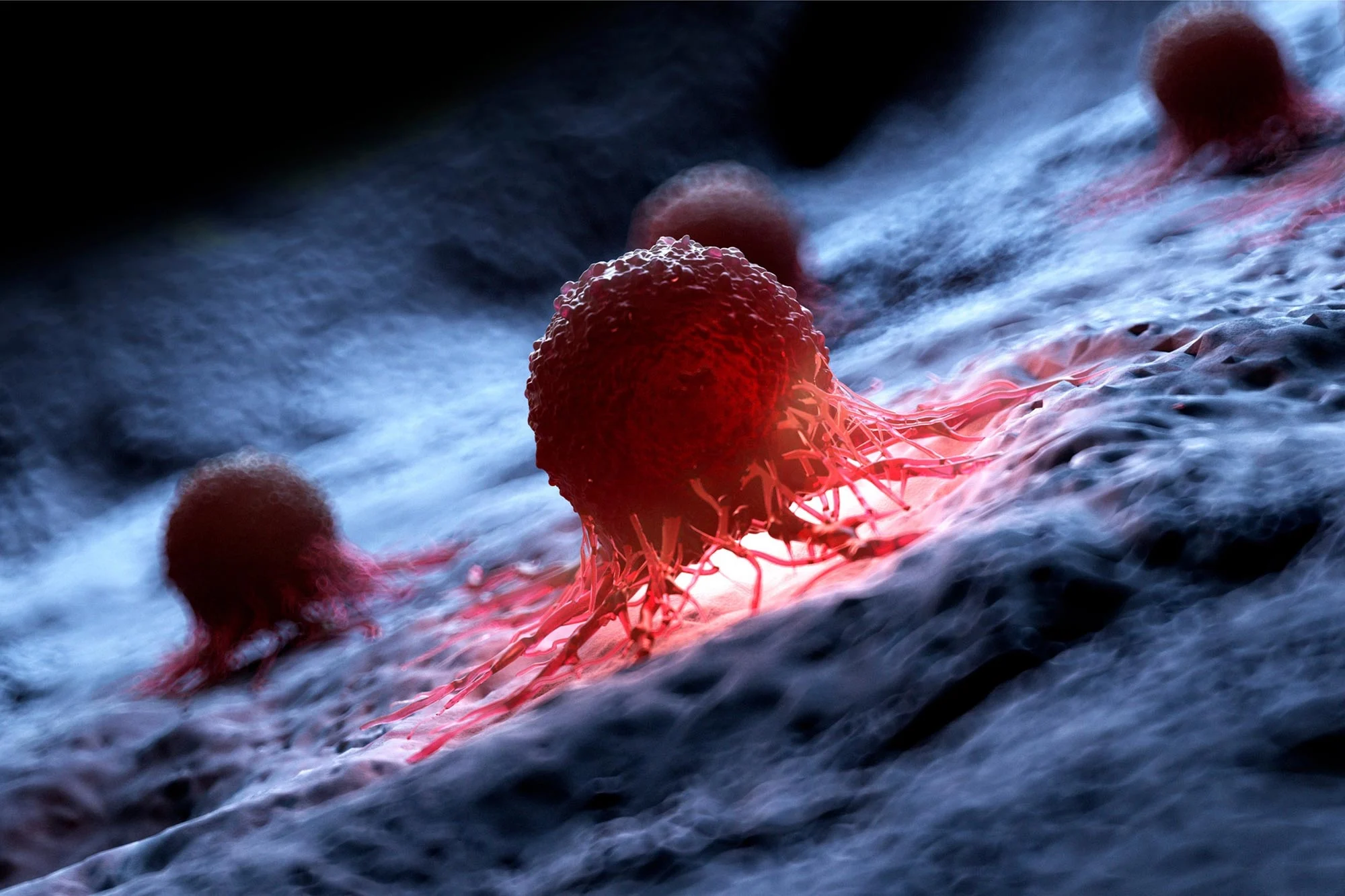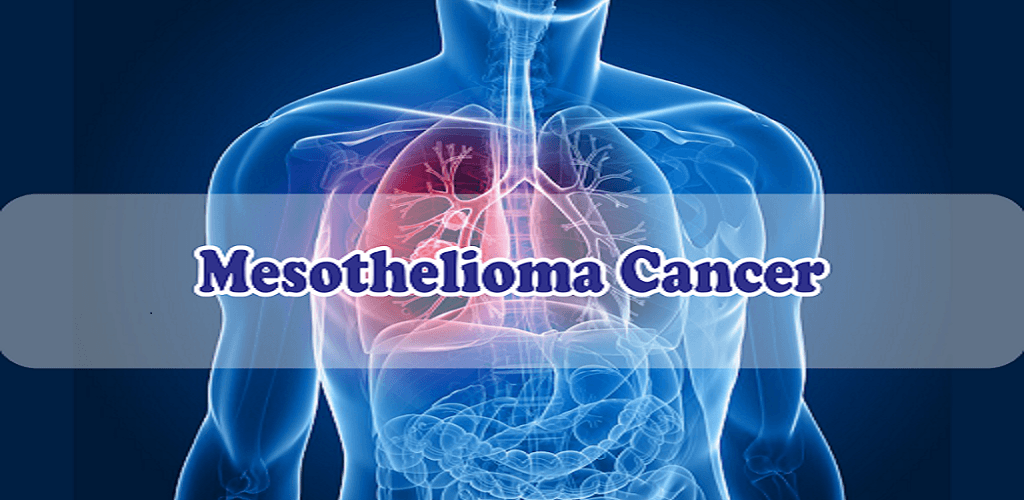What Is Breast Cancer? Symptoms, Causes, Diagnosis, Treatment, and Prevention

Breast cancer is a disease that starts in the breast with a malignant tumor. A malignant tumor is a mass of cells that grows out of control. The cancerous cells can also metastasize, or move to other tissues or parts of the body.
The cancer can develop in any of the three types of breast tissue: lobules, ducts, and connective tissue.
Most cancer begins in the lobules (the milk-producing glands) or the ducts, along which milk travels to the nipple. However, tumors can also develop in the fibrous and fatty connective tissue surrounding the lobules and ducts.
Several different types of breast cancer exist. The type of breast cancer and its stage, or how far it has grown, determine the course of treatment for it.
Breast cancer that spreads into normal tissue is called invasive breast cancer. Noninvasive breast cancer stays within the breast lobule or duct.
Signs and Symptoms of Breast Cancer
If you notice any of the following symptoms, check in with your healthcare provider.
- Any lump in or near the breast or underarm
- Warmth or unexplained tenderness in the breast
- A hardening, thickening, or swelling area in the breast
- Nipple tenderness without another cause
- Nipple discharge (except breast milk), especially clear or bloody discharge
- An unexplained change in color, texture, size, or shape of the breasts or nipples
- Skin dimpling on the breast or enlarged pores (like an orange skin)
- Swelling, redness, scaliness, or general pain in the breast or nipples
- Nipples that turn inward without explanation
- Irritated or itchy breasts
- A rash on the breast, which can be a sign of inflammatory breast cancer
While a lump can be a sign of cancer, nearly 80 percent of lumps found in the breast turn out to be noncancerous. The most common causes of noncancerous lumps include:
- Fibrocystic changes as a result of hormonal fluctuations
- Cysts
- Benign lumps called fibroadenomas
- Wart-like growths called intraductal papillomas
- Fatty tissue that occurs as a result of trauma to the breast

Causes and Risk Factors of Breast Cancer
The biggest risk factors for this disease, besides female sex, include:
- Age — risk starts to rise after age 50
- A family history
- Genetics
- Previous exposure to radiation
Each woman’s risk involves a combination of different factors. If you’re concerned, your doctor can help you assess how great your risk is and whether you need to take any extra precautions about screening.





I think other site proprietors should take this web site as an model, very clean and fantastic user genial style and design, let alone the content. You are an expert in this topic!
Usually I do not read post on blogs, but I wish to say that this write-up very forced me to check out and do it! Your writing taste has been amazed me. Thanks, quite nice article.
Thanks for the auspicious writeup. It actually used to be a leisure account it. Look advanced to far added agreeable from you! By the way, how can we keep up a correspondence?
I am really loving the theme/design of your site. Do you ever run into any web browser compatibility issues? A few of my blog readers have complained about my site not working correctly in Explorer but looks great in Chrome. Do you have any suggestions to help fix this problem?
Use best hosting service and use website speed up plugin.